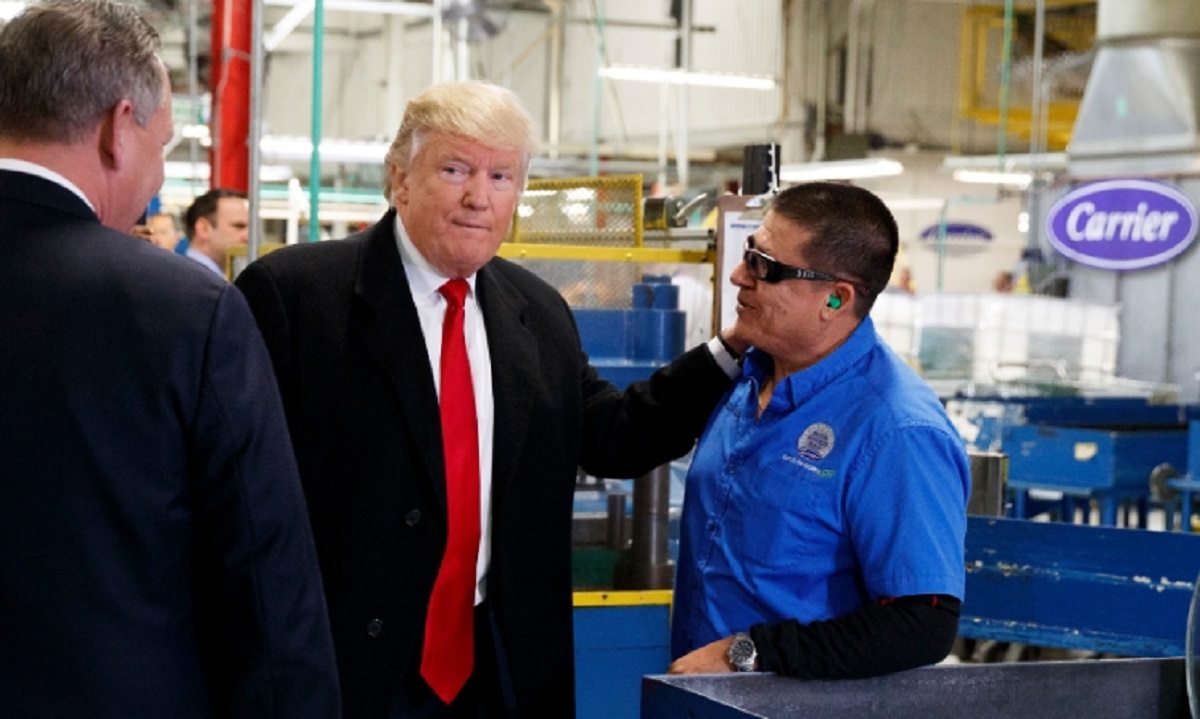Upcoming JOLTS Release Signals Bearish Job Market Shift Amid Trump Tariff Turmoil
Wall Street is gearing up for a critical week of labor market data releases, headlined by the government’s May job gains report, as investors seek to decipher the real economic impact of President Don

Wall Street is gearing up for a critical week of labor market data releases, headlined by the government’s May job gains report, as investors seek to decipher the real economic impact of President Donald Trump’s tariff-driven strategy. Despite displaying unexpected resilience in 2025, the labor market remains pivotal in supporting economic performance and shaping the Federal Reserve’s interest rate decisions. It also serves as a key indicator of how Trump’s trade policies are influencing employment trends.
The Bureau of Labor Statistics will launch the week with its Job Openings and Labor Turnover Survey (JOLTS) report for April, set for release on Tuesday. This report offers an early snapshot of U.S. labor market dynamics ahead of the May jobs report on Friday, June 6. In March 2025, job openings dropped by 288,000 to 7.192 million—the lowest in six months—falling short of the anticipated 7.48 million. April’s consensus expects a further decline to 7.10 million, a level reminiscent of pre-COVID-19 figures from 2020. These numbers will set the stage for understanding hiring trends and labor turnover as the year progresses.
Following JOLTS, ADP’s National Employment Report on Wednesday will detail May’s private sector hiring, with expectations of a slight increase from April’s modest 62,000 job gain. Analysts will scrutinize wage growth data for both existing and new employees, alongside rising continued unemployment claims—the longest duration to reemployment in three years—providing clues about private sector hiring momentum into the summer.
Thursday delivers dual insights: the Labor Department’s weekly initial unemployment claims, recently at 240,000 and trending upward, and Challenger Gray & Christmas’s March layoff report. The latter recorded year-to-date layoffs at 602,000, an 87% surge from 2024, with nearly half linked to government cuts under Elon Musk’s Department of Government Efficiency initiative. Friday’s nonfarm payroll report is projected to show a net gain of 130,000 jobs—the lowest since February—while unemployment holds at 4.2%. These figures will collectively shape expectations for Federal Reserve policy, with the CME Group’s FedWatch Tool indicating a 56% chance of a quarter-point rate cut in September, potentially the year’s first.
Federal Reserve Governor Christopher Waller recently noted that a robust labor market and moderating inflation afford policymakers time to monitor trade negotiations and economic shifts. He highlighted “downside risks to economic activity and employment and upside risks to inflation” in late 2025, heavily tied to evolving trade policies.
Trump’s Tariffs and Their Effect on Employment
President Trump’s tariffs—imposing a 10% baseline on most imports, with higher rates for select nations—have injected uncertainty into the U.S. economy, particularly the job market.
Industries such as manufacturing, retail, and agriculture, reliant on imported goods, face rising costs that could trigger layoffs. The Tax Foundation estimates these tariffs may shrink long-run GDP by 0.2% and cut employment by 142,000 full-time equivalent jobs. Yale’s Budget Lab projects a steeper impact, potentially raising unemployment from 4.2% to 4.7% by year-end 2025, affecting roughly 500,000 workers.
General Motors, for instance, slashed its 2025 profit forecast, citing a $4-$5 billion tariff hit, while airlines have withdrawn financial outlooks due to uncertain consumer spending on travel. bank of america economist Antonio Gabriel suggests firms may have paused hiring in trade and transportation sectors in May but are not yet shedding workers amid tariff ambiguity. However, some U.S.-centric manufacturers could see short-term job gains as demand shifts domestically, though net employment losses are widely anticipated.
The labor market’s capacity to weather these disruptions is under scrutiny. As Martha Gimbel of Yale’s Budget Lab observed, “American businesses are resilient, but there’s a limit to what they can endure before the policy environment starts to bite.”
Corporate Layoffs: Disney and Microsoft
Adding to labor market pressures, major corporations like Disney and Microsoft have announced significant layoffs, reflecting industry-specific challenges and broader economic trends.
Disney’s Strategic Shift

Disney is cutting hundreds of jobs globally to reduce costs as it adapts to a media landscape shifting from cable to streaming. Impacted areas include marketing, TV publicity, casting, development, and corporate finance. Since 2023, Disney has shed over 8,000 roles, targeting $7.5 billion in annual savings. The company reported a 13% drop in linear network revenue year-over-year, offset by an 8% rise in direct-to-consumer revenue, underscoring its pivot to digital platforms. Earlier cuts this spring hit ABC News and shuttered FiveThirtyEight, consolidating production teams for shows like “20/20” and “Good Morning America.” Despite these reductions, Disney’s stock has climbed 20% since strong Q2 results and news of a new Middle East resort.
Microsoft’s AI-Driven Cuts

Microsoft recently eliminated hundreds of positions, following 6,000 cuts last month, as it balances cost reduction with heavy AI investment. With 228,000 employees as of June 2024 (55% U.S.-based), the tech giant is prioritizing AI-focused roles and leveraging AI tools to streamline software development, reducing demand for traditional coders. This aligns with industry trends, as peers like Meta and Salesforce also use AI to optimize workforces. Microsoft frames these moves as necessary to thrive in a dynamic market, though the cuts signal broader tech sector instability.
Implications for the Labor Market and Policy
The convergence of declining job openings, tariff-related uncertainty, and corporate layoffs paints a complex picture for the U.S. labor market. While resilience persists, evidenced by steady unemployment and modest hiring, risks are mounting. The JOLTS report and subsequent data will clarify whether these pressures are eroding labor market strength, potentially nudging the Federal Reserve toward earlier rate cuts to stimulate growth.
For investors, the interplay of Trump’s tariffs and corporate restructuring underscores a cautious outlook. The labor market’s trajectory—whether it absorbs these shocks or falters—will be a decisive factor in the economy’s path through 2025, with the upcoming data releases offering the first clear signals.
Disclaimer: The views in this article are from the original Creator and do not represent the views or position of Hawk Insight. The content of the article is for reference, communication and learning only, and does not constitute investment advice. If it involves copyright issues, please contact us for deletion.